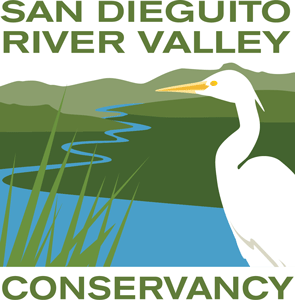Vocabulary
biodiversity: the number and variety of organisms (plants, animals and others) found within a specified geographic region.
chaparral: a habitat with dense, small evergreen shrubs that grow where summers are hot and dry and winters are cool and moist.
coastal sage scrub: a habitat on drier coastal slopes that consists of drought resistant, deciduous shrubs and other plants.
disturbance: temporary change in environmental conditions that causes a pronounced change in an ecosystem.
ecosystem: all the living and nonliving things that interact in an area; within each ecosystem is one or more habitats.
ecosystem services: the benefits that ecosystems provide humans, from the air, clean water and food to breaking down waste and building soils to beauty, recreation and comfort/inspiration.
endangered: at risk or in danger of becoming extinct.
environment: all the living and nonliving things that surround and affect an organism.
erosion: the process by which wind, water, or other means wears away land. estuary: a place where fresh water from rivers meets salt water from the ocean.
habitat: a specific type of environment inhabited by particular animal and/or plant species; a place where an animal or plant lives.
nitrates: nutrients needed by all aquatic plants and animals that come from decomposing dead plants and animals and the excretions of living animals.
non-native species: species that have been introduced into new areas that have not historically been part of their native range. organism: a living thing, such as an animal, plant, alga, bacterium, or fungus.
organism: a living thing, such as an animal, plant, alga, bacterium, or fungus.
Pacific Flyway: a north-south route, extending from Alaska to Patagonia, that is used by migrating birds.
pH: a measurement of the acidic or basic quality of water.
phosphates: nutrients needed for plant and animal growth that can come from several sources including human and animal waste, industrial pollution, and agricultural runoff.
plant community: a collection or association of plant species within a designated geographical unit, which forms a relatively uniform patch, distinguishable from neighboring patches of different vegetation types.
pollution: the presence or introduction into the environment of a substance (pollutant), usually produced by humans, that causes harm to a natural environment.
restoration: restoring to its natural form.
species: a group of the same type of living organisms that can mate and produce (reproduce) other living organisms of the same kind.
threatened: at risk of becoming endangered, leading to extinction.
water quality: a measure of several factors (e.g., dissolved oxygen, nitrates, phosphates, and pH) in water relating to a particular purpose of the water (e.g., drinking).
watershed: an area of land that drains the rain falling onto it (or water flowing through it) into a common body of water, such as a creek or stream, which flows into a larger body of water, such as a river or lake, which and eventually flows into an estuary and out to the ocean





